Second-hand Magic, Part I
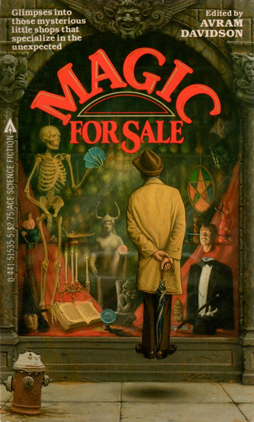 At a science fiction book sale not too long ago, I picked up an anthology from 1983 called Magic For Sale. There was something irresistibly appropriate in buying the book second-hand: edited by Avram Davidson, it’s a collection of stories for the most part precisely about the magic that lies within the second-hand. About purchasable goods with something in them beyond cost and explanation. About shoppers who find more than they expected. About supernatural bargains, each with its own twist.
At a science fiction book sale not too long ago, I picked up an anthology from 1983 called Magic For Sale. There was something irresistibly appropriate in buying the book second-hand: edited by Avram Davidson, it’s a collection of stories for the most part precisely about the magic that lies within the second-hand. About purchasable goods with something in them beyond cost and explanation. About shoppers who find more than they expected. About supernatural bargains, each with its own twist.
Mostly. It’s actually difficult to find a plot description that fits all the stories in the book. Many involve strange old shops (that may or may not be present when a shopper returns), but many don’t. Most involve somebody buying something, but several are about decisions not to buy, or even simply about a customer escaping a shop more-or-less intact. Virtually all involve magic, except one or two that are, at least superficially, science fiction. So in some ways it’s quite a mixed bag.
And then again, in other ways it isn’t. Tonally, the stories feel quite similar, which might be a function of Davidson’s tastes as editor. But it’s interesting to wonder how much the similarity has to do with the nature of the book’s theme: the moment of transaction, the buying (or not) of the odd and dangerous. The way that the unnatural enters everyday life. Often, in horror and dark fantasy, critics like to talk about the “irruption” of the supernatural into the real; but the relevant definitions of irrupt have to do with something breaking in by force, and that’s exactly what doesn’t happen here, in most cases. Mostly, these stories are about making deals, and whether a character chooses to accept the deal they’re given, and what happens as a result. Mostly. One way or another, certain themes tend to emerge.
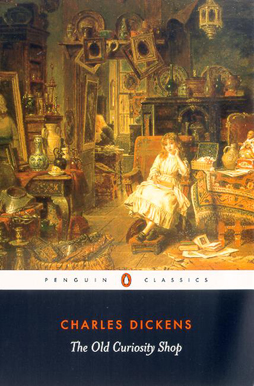 Let’s look at the actual contents of the book. The fifteen short stories (some of them very short) are preceded by an introduction by Davidson, in which he reminisces about strange shops he has known, and briefly looks back over the history of shops and of weird fiction about shops — he argues that shops, and especially second-hand shops, are more recent things than we might think, and that Dickens’ Old Curiosity Shop was the first appearance in literature of a strange old second-hand shop. That is, as I understand him: a setting in which the aura of the varied stock for sale is a key part of the setting’s affect, the sense of a place holding multiple unknowable histories. Maybe even endless and infinite histories, as the stock of such places is (I think) meant not to be quantified or enumerated — a part of the evocativeness of the mysterious curiosity shop lies in the sense of items beyond counting and beyond defining, the store as a shadowed place that always generates more mystery the further into the shadows you look.
Let’s look at the actual contents of the book. The fifteen short stories (some of them very short) are preceded by an introduction by Davidson, in which he reminisces about strange shops he has known, and briefly looks back over the history of shops and of weird fiction about shops — he argues that shops, and especially second-hand shops, are more recent things than we might think, and that Dickens’ Old Curiosity Shop was the first appearance in literature of a strange old second-hand shop. That is, as I understand him: a setting in which the aura of the varied stock for sale is a key part of the setting’s affect, the sense of a place holding multiple unknowable histories. Maybe even endless and infinite histories, as the stock of such places is (I think) meant not to be quantified or enumerated — a part of the evocativeness of the mysterious curiosity shop lies in the sense of items beyond counting and beyond defining, the store as a shadowed place that always generates more mystery the further into the shadows you look.
The first piece, a short-short by John Brosnan called “Junk Shop,” gives a good example — it’s a shaggy-dog story about a guy and a junk shop and a crystal egg with something inside it. Alfred Bester’s “Of Time and Third Avenue” is next, in which no store appears; instead, there’s a man from the future year 1990 (the story was first published in 1951) who has to recover something out of its proper era that’s just been bought by an unsuspecting purchaser. John Collier’s “Bottle Party” follows, in which a man finds a small store that sells bottled goods, and makes a deal for power that turns bad. Robert Silverberg’s “As Is” is next, about a man who buys a used car with strange characteristics. Interestingly (at least to me), the used-car vendor wasn’t magical himself, but was only hanging on to the car for somebody else who never came back to collect it. The magic, in this case, doesn’t come from the store.
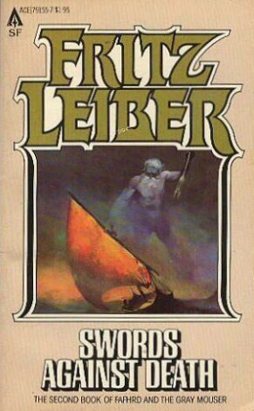 Much the same is true of “The Cloak,” a surprisingly clunky story by Robert Bloch (a relatively early story of his, it was published in 1939, when Bloch would’ve been about 22). The titular cloak came from a regular costumer’s shop with a secret, as opposed to a store that’s filled with diverse magics. Inevitably, it leads to a twist ending, albeit one that’s visible from a distance. Terry Carr’s “Touchstone” is more classic in its form, a story of a strange shop and of an ambiguous magic item that gives a buyer more than he wanted, and that he must bring himself to return. Davidson’s own “Dr. Bhumbo Singh” is a strange and extravagantly-written story about a sinister shop and a man looking for a spell who, of course, buys more than he expects. Harlan Ellison’s “The Cheese Stands Alone” follows a man in a mid-life crisis who comes to a bookstore where he must decide what he really wants. Jane Yolen’s “The Malaysian Mer” follows a tourist who finds a dangerous curio for sale, from which she must struggle to escape.
Much the same is true of “The Cloak,” a surprisingly clunky story by Robert Bloch (a relatively early story of his, it was published in 1939, when Bloch would’ve been about 22). The titular cloak came from a regular costumer’s shop with a secret, as opposed to a store that’s filled with diverse magics. Inevitably, it leads to a twist ending, albeit one that’s visible from a distance. Terry Carr’s “Touchstone” is more classic in its form, a story of a strange shop and of an ambiguous magic item that gives a buyer more than he wanted, and that he must bring himself to return. Davidson’s own “Dr. Bhumbo Singh” is a strange and extravagantly-written story about a sinister shop and a man looking for a spell who, of course, buys more than he expects. Harlan Ellison’s “The Cheese Stands Alone” follows a man in a mid-life crisis who comes to a bookstore where he must decide what he really wants. Jane Yolen’s “The Malaysian Mer” follows a tourist who finds a dangerous curio for sale, from which she must struggle to escape.
Fritz Leiber’s darkly delightful “The Bazaar of the Bizarre” is next, in which Fafhrd and the Gray Mouser must save the world of Nehwon from invaders whose advance guard is a mysterious shop. Ray Bradbury’s “Drink Entire: Against the Madness of Crowds” is a bitter, impressionistic story about a chance extended and a road not taken. L. Sprague de Camp and Fletcher Pratt’s “Elephas Frumenti” is a story from Gavagan’s Bar in which a professor is asked for a sample of his erudition, and a mad whimsy is thereby explicated — but in which nothing is actually bought, other than a few drinks.
Theodore Sturgeon’s “Shottle Bop” is about a man who’s hectored by a shop-owner into buying a gift; he’s given a condition that must not be broken, so of course he breaks it. H.G. Wells’ “The Crystal Egg” is the opposite of most of the other stories, in that it follows a curiosity-shop owner who becomes obsessed with the eponymous object; it seems to echo the John Brosnan story that opened the book, and would be the last except for Daniel Gilbert’s “Woman in the Designer Genes,” a science-fictional short-short about a futuristic gene-splicing company.
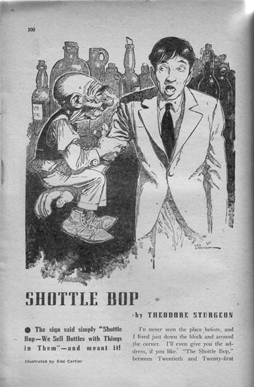 They’re all, and I don’t mean this dismissively, more or less competent stories. Some are quite good — I particularly enjoyed Yolen’s, Leiber’s, and Bradbury’s tales — and some aren’t. I didn’t find any of them terrible, but some were a trifle obvious or suffered from bland prose. In particular, I felt a lot of the humorous stories had too high a ratio of set-up to punch-line, and often just weren’t very funny.
They’re all, and I don’t mean this dismissively, more or less competent stories. Some are quite good — I particularly enjoyed Yolen’s, Leiber’s, and Bradbury’s tales — and some aren’t. I didn’t find any of them terrible, but some were a trifle obvious or suffered from bland prose. In particular, I felt a lot of the humorous stories had too high a ratio of set-up to punch-line, and often just weren’t very funny.
But I do wonder if that’s a sign of changed eras; written humour tends to become faster-paced over time (leaving aside greats like Wodehouse and Wilde), and many of these stories were old when the book was published a generation ago. Only four of the stories were first published in the 80s, none in the 1970s; and that may contribute to the specific atmosphere that the anthology creates.
I found myself thinking of The Twilight Zone as I read. Of Rod Serling’s fables that so often focused on down-at-heel schmucks finding some wonder that changes their life until a twist kicks in (in fact, to me the difference between the good and bad stories here is like the difference between The Twilight Zone, typically well-crafted and sharply-dialogued even when the plot’s obvious, and Rod Serling’s Night Gallery, typically neither). The sense of a guy in the middle of the twentieth century struggling with a world of business and bad deals is common — Yolen’s story is the only one with a female lead, the Leiber story’s the only one not set on Earth, and the Wells and Gilbert stories are the only ones set outside the last century (Wells’ in the nineteenth, Gilbert’s in an unspecified future). Leiber’s is also one of the few stories to feature two leads; most are about one person, a buyer dealing with a seller. And they’re all, explicitly or implicitly, set in cities. Most involve a twist at the end, but it’s primarily the way in which the ordinary meets the extraordinary that recalls The Twilight Zone: the everyday becomes uncanny.
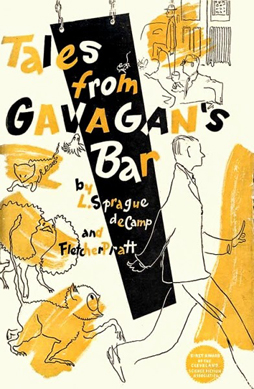 In a sense, this is a precursor genre, or sub-genre, of urban fantasy. These are stories about strangeness lurking in familiar places — an evanescent strangeness, one that’s vanished when you try to find it again, so therefore a strangeness that can’t be normalised. They’re stories about stumbling into the weird, and about the way the weird deforms the everyday. One of the basic transactions of capitalism, the everyday rite of buying and selling, becomes a way for horror and fantasy to enter one’s life. So the tales hinge on moments of liminality, precisely the uncertain state when that ritual of I-give-this-you-give-that is negotiated and before it’s concluded; some of the stories are about turning back, some see the ritual enacted and then follow what happens after.
In a sense, this is a precursor genre, or sub-genre, of urban fantasy. These are stories about strangeness lurking in familiar places — an evanescent strangeness, one that’s vanished when you try to find it again, so therefore a strangeness that can’t be normalised. They’re stories about stumbling into the weird, and about the way the weird deforms the everyday. One of the basic transactions of capitalism, the everyday rite of buying and selling, becomes a way for horror and fantasy to enter one’s life. So the tales hinge on moments of liminality, precisely the uncertain state when that ritual of I-give-this-you-give-that is negotiated and before it’s concluded; some of the stories are about turning back, some see the ritual enacted and then follow what happens after.
At least, from one perspective. But even the successful rituals, the stories of completed buying and selling, tend to have bleak outcomes. Viewed another way, then, these are warning fictions, parables about the dangers of capitalism. Your typical protagonist suffers from buying something due, often, to information asymmetry. As a good Canadian socialist, I’m no fan of naked capitalism to start with; but it does seem to me that the stories mostly show the act of purchase as being a confrontation, a conflict. Bradbury’s story in particular is alive to the potential for tragedy, as suspicion clouds what might otherwise have been a fruitful relationship. Then again, it very often seems that the sellers are suffering as well as the purchasers — sometimes the selling is done as a desperate last act, for example. It’d be very easy to give a lot of these stories a reading in which everyone involved is caught in a cycle of exploitation.
And so it’s notable that the exploitation occasionally extends beyond customer and vendor: Collier’s lead character buys a sentient being imprisoned in a bottle, Yolen’s looks at a magical creature, Leiber’s Gray Mouser browses among what he believes to be imprisoned women. Slavery is as it were hinted at, only rarely made explicit as a commercial possibility. Still, there’s a frequently-recurring image in these stories of the bought item imprisoning or holding some other force, whether in a stone or the trunk of a car or a bottle — ‘things in bottles’ seeming as well to be a sub-genre of this very particular form.
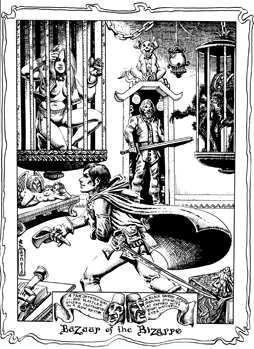 It’s also interesting how many of these stories, set mainly in Western cities, invoke images of some Eastern culture as a signifier of the mysterious. Davidson’s “Dr. Bhumbo Singh” is a native of the Anadaman Islands; Collier’s protagonist buys a genie; Carr’s lead buys “an ancient Indian piece”; Yolen’s character is an American in Malaysia; even Leiber’s shopkeepers wear what seems to be a tarboosh or fez. Typically these are used in the story to establish a sense of the ‘exotic,’ the out-of-the-ordinary, the strange. Again, it seems symptomatic of what was expected and what wasn’t in mid-20th-century America — and it’s fascinating to note that Wells’ 1897 story actually reverses roles, being a tale about the owner of an English antiquities dealer visited by two potential customers, one of them a Javanese prince.
It’s also interesting how many of these stories, set mainly in Western cities, invoke images of some Eastern culture as a signifier of the mysterious. Davidson’s “Dr. Bhumbo Singh” is a native of the Anadaman Islands; Collier’s protagonist buys a genie; Carr’s lead buys “an ancient Indian piece”; Yolen’s character is an American in Malaysia; even Leiber’s shopkeepers wear what seems to be a tarboosh or fez. Typically these are used in the story to establish a sense of the ‘exotic,’ the out-of-the-ordinary, the strange. Again, it seems symptomatic of what was expected and what wasn’t in mid-20th-century America — and it’s fascinating to note that Wells’ 1897 story actually reverses roles, being a tale about the owner of an English antiquities dealer visited by two potential customers, one of them a Javanese prince.
But, again, this all seems to come back to an attempt to depict the fantastic interacting with the real. And there’s a level where the stories here are exploring a kind of dissonance, creating paradoxes by uniting two contradictory things. Magic, almost by definition, is what exists outside of a knowable system. Capitalism, on the other hand, is the system according to which the ‘first world’ of the time of these stories works (as opposed to the communist ‘second world’). So these are stories that show a system that seems to imprison the unsystemisable within itself, like, if you will, a genie in a bottle; or, from another angle, show the unsystemisable emerging into the world of system.
And yet there’s a third way to look at them as well. I said magic typically exists outside a knowable system; but of course there are systems of magic, from Renaissance occultism to D&D spell lists to the intricate laws of Brandon Sanderson’s otherworlds. The trick, I think, is that these systems are not ultimately knowable. You know that the magic works, but not why. Science is explicable, and can always be analysed further. With magic that’s not the case.
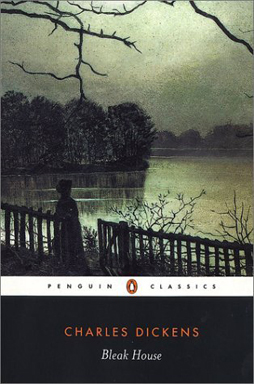 So given that, you could say that these stories show capitalism taking on the unknowableness of magic. Over the course of the twentieth century capitalism became increasingly intricate — supply chains grew longer, financial instruments more complex — and, beyond that, became obviously more intricate. People increasingly knew that they were involved in macroeconomic systems and a complex interrelated world. You could look at these stories as on some level reacting to that, creating fantastic images of an increasingly fantastic capitalism. (And if Davidson’s right that The Old Curiosity Shop is at least the spiritual ancestor of these stories, then I wonder if one might argue that in Bleak House Dickens was also one of the first writers to consciously depict a world defined by intricate and unknowable systems — economic, judicial, and otherwise).
So given that, you could say that these stories show capitalism taking on the unknowableness of magic. Over the course of the twentieth century capitalism became increasingly intricate — supply chains grew longer, financial instruments more complex — and, beyond that, became obviously more intricate. People increasingly knew that they were involved in macroeconomic systems and a complex interrelated world. You could look at these stories as on some level reacting to that, creating fantastic images of an increasingly fantastic capitalism. (And if Davidson’s right that The Old Curiosity Shop is at least the spiritual ancestor of these stories, then I wonder if one might argue that in Bleak House Dickens was also one of the first writers to consciously depict a world defined by intricate and unknowable systems — economic, judicial, and otherwise).
It should go without saying that there’s no reason to think any of the writers who put these stories together were consciously writing along these lines; no reason to view any of these stories in any of these ways, other than that it makes for some interesting connections. As a group, the stories describe a wide range of purchasing experiences, deals both satisfactory and otherwise. And yet the anthology feels like a whole; the texts sit well next to each other. So it’s fascinating to me why that is. It is quite possible, of course, that I’m over-complicating things. Perhaps stories of magical purchases with unhappy endings simply descend from a common root; perhaps all these stories derive from the ultimate story of a man buying magic power. Perhaps they’re all variations on the story of Faustus.
Faustus is both buyer and seller; no wonder then that the vendors here are so often as exploited as the sellers, so often unaware of the real value of the goods they sell. Wells’ antiquities dealer becomes obsessed with one of the curiosities he has up for sale; Carr’s second-hand bookseller openly says “I never know about the things I sell.” One way to read the Faust story is as a dramatisation of Christian morality in a world of capitalist exploitation; buy your way to power and go to hell. Knowingly or unknowingly, similar fates are threatened in a lot of these stories, to buyer or seller or both.
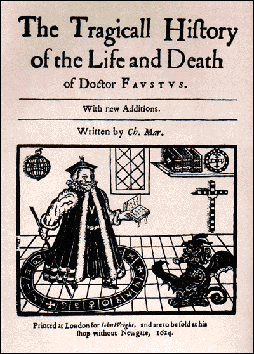 When all is said and done, of course, this is only one anthology, put together by one editor at one particular time. Would anything change in the twenty-first century? Are there still strange magical shops, or is everything on the internet? Joe Hill’s Heart-Shaped Box had a man buying a haunted suit online; is this the wave of the future? Are any of the themes I can see in the Davidson collection likely to be echoed in another book of similar stories? I don’t know. Yet.
When all is said and done, of course, this is only one anthology, put together by one editor at one particular time. Would anything change in the twenty-first century? Are there still strange magical shops, or is everything on the internet? Joe Hill’s Heart-Shaped Box had a man buying a haunted suit online; is this the wave of the future? Are any of the themes I can see in the Davidson collection likely to be echoed in another book of similar stories? I don’t know. Yet.
As I was writing this post, my girlfriend pointed out that she owned another collection of tales about this same theme: The Magic Shop, edited by Denise Little and published in 2004. Coincidentally, it also has fifteen stories — all of which were written specifically for that book. So next week I’ll contrast that anthology with Magic For Sale, and see what carries through and what is different. I can say this: just as I bought Magic For Sale second-hand, so Grace bought The Magic Shop at a bazaar in a church basement. It had been very recently published, then. But second-hand is still second-hand. The object still becomes invested with a past unknown to the buyer. That’s the magic of the second-hand thing. It remains, always, to whatever extent, unknown, mysterious, and, like any magical object, bought in any strange place, a thing on which to wonder.
Matthew David Surridge is the author of “The Word of Azrael,” from Black Gate 14. His ongoing web serial is The Fell Gard Codices. You can find him on Facebook, or follow his Twitter account, Fell_Gard.
A fine review, Matthew. I remember buying this paperback when it first came out, three decades ago. That cover was absolutely irresistible!
I thought Davidson made a fine editor. He was the editor of F&SF for a couple of years, and edited several volumes of THE BEST FROM FANTASY AND SCIENCE FICTION, paperbacks that I hunted down with great interest many years ago.
Thanks John! You’re so right about that cover — incredibly inventive and playful. And I did think Davidson did a good job as editor on the book, finding some very interesting selections and sequencing the stories well.
[…] week, I wrote here about the Avram Davidson–edited 1983 anthology Magic For Sale. I looked at the book’s […]